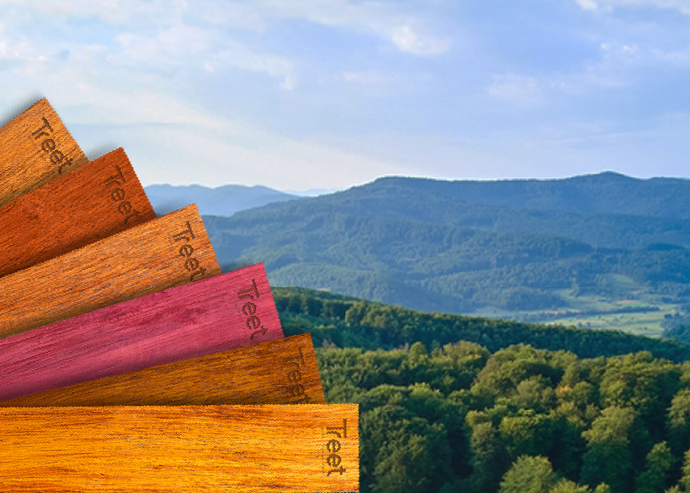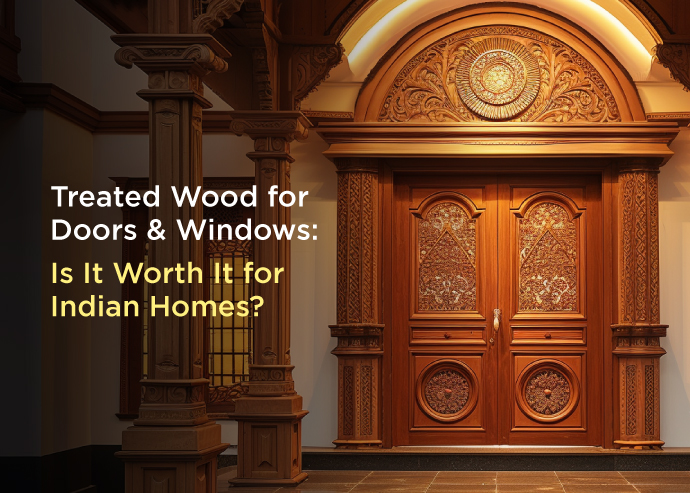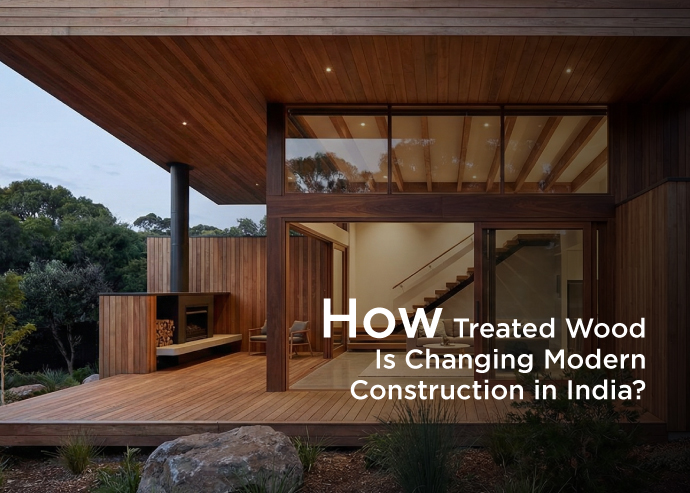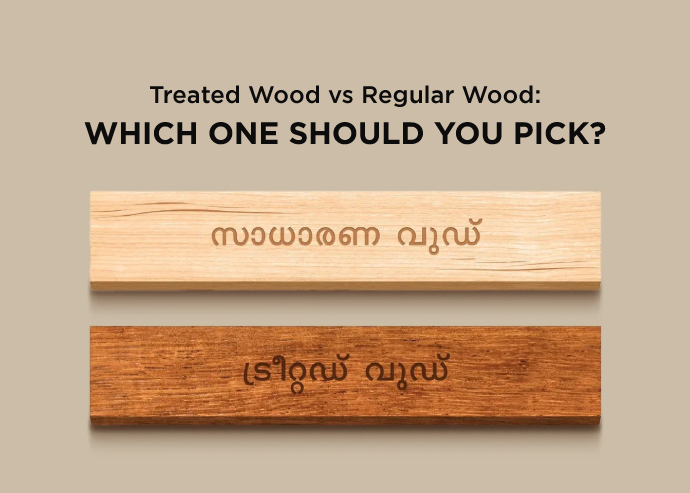Blog Details

What Is the Role of Treated Wood in Eco-Friendly and Sustainable Building?
Buildings featuring treated wood demonstrate durability, quality, and long-term performance. Treated timber resists warping, decay, and pests, making it a reliable choice for sustainable construction. The material’s performance is more than aesthetic—it reflects responsible material selection and contributes to broader sustainability goals.
This article covers:
- Definitions of treated wood: types, treatments, and processes
- Contributions of treated wood to sustainability, including carbon storage, lifespan, and reuse
- Environmental risks and considerations: leaching, toxicity, end-of-life, and sourcing
- Best practices for selection, use, and alternatives
What Treated Wood Means
Treated wood refers to timber modified through chemical or thermal processes to improve resistance to decay, insects, moisture, and fire. Common treatment methods include:
- Pressure-treated wood: Timber infused with preservatives, often copper-based (e.g., ACQ or copper azole), to resist fungi and termites.
- Heat-treated or thermally modified wood: Timber exposed to heat (and sometimes steam) to improve stability and resistance to rot without heavy chemical use.
- Acetylated wood: Wood treated with acetic anhydride, derived from plant biomass, to reduce moisture absorption and improve stability with lower toxicity.
Each method has advantages and limitations, but the primary goal is consistent: enhance durability and performance, particularly in challenging or humid environments.
How Treated Wood Advances Sustainability
Treated wood contributes significantly to sustainable construction through durability, carbon management, and reduced material consumption. Key benefits include:
- Longer Lifespan: Decay, rot, and insect damage are major causes of timber replacement. Treated wood reduces replacement frequency, conserving trees, manufacturing energy, and waste.
- Carbon Storage: Timber retains carbon absorbed during tree growth. Longer-lasting wood delays carbon release, supporting climate-friendly building practices.
- Lower Embodied Energy: Compared with steel or concrete, wood production consumes less energy and produces fewer CO₂ emissions. Longer durability further enhances this advantage over a building’s life cycle.
- Resilience in Adverse Conditions: Treated wood withstands moisture, insect activity, and fungal attack, ensuring lower maintenance in climates with high humidity, frequent rainfall, or ground contact.
- Recycling and Reuse Potential: Depending on treatment, timber can be repurposed at end-of-life (e.g., landscaping wood, mulch, or composite material). Lower-toxicity treatments improve safety and reuse options.
- Support for Sustainable Forestry: Sustainability improves when timber is sourced from certified forests (FSC, PEFC), ensuring regrowth, biodiversity protection, and ecosystem health.
Environmental Risks and Considerations
While treated wood offers sustainability benefits, careful attention is necessary to avoid unintended environmental or health impacts:
- Chemical Toxicity and Leaching: Certain preservatives, particularly older ones, may leach heavy metals or chemicals into soil or water. Risk varies with treatment type.
- Human Health Concerns: Safe handling is essential. Gloves, masks, and dust control may be necessary. Indoor use of some chemically treated timber can pose exposure risks.
- End-of-Life Disposal: Some treated timber cannot be safely burned or landfilled. Reuse or recycling options depend on treatment type.
- Energy Costs of Treatment: Thermal modification and acetylation consume significant energy, increasing the material’s embodied energy despite improved longevity.
- Potential Environmental Contamination: Inadequate treatment or mismanaged facilities can introduce contaminants to ecosystems. Proper handling and facility management are critical.
- Aesthetic and Performance Trade-offs: Certain treatments may alter wood color or texture. Post-treatment moisture content can cause warping unless properly dried.
When Treated Wood Makes Sense: Best Practices & Alternatives
Treated wood is most effective when applied under conditions that maximize durability and sustainability benefits:
Use Treated Wood When:
- Timber is in contact with soil or exposed to moisture (e.g., fence posts, foundations, outdoor structures)
- The local climate is humid, rainy, or prone to insect activity
- Long-term durability and lower maintenance are priorities
- Carbon storage within the structure is a sustainability goal
Choosing Treatments Wisely:
- Prefer treatments with lower toxicity and environmental impact (modern copper-based preservatives over older arsenic- or chromium-based types)
- Heat or acetylation treatments offer improved long-term performance despite higher initial energy input
- Ensure treated timber is properly dried and stabilized to reduce warping
Sustainable Sourcing:
- Timber should come from certified forests (FSC, PEFC) to guarantee responsible harvesting, regrowth, and ecosystem preservation
- Local sourcing is preferred to reduce transport-related emissions
Maintenance Matters:
- Seal or coat surfaces where necessary to minimize leaching and moisture ingress
- Monitor and maintain structures proactively to prevent decay
Consider Alternatives Where Appropriate:
- Untreated but naturally durable species (certain hardwoods or tropical species) may be more sustainable if sourced responsibly
- Engineered woods (CLT, glulam) reduce waste, improve strength, and can lower chemical use
- Composite or hybrid materials should be evaluated for life cycle cost, embodied energy, and recyclability
Conclusion: The Role of Treated Wood in Sustainable Building
Treated wood is a significant contributor to eco-friendly construction when applied responsibly. It extends the life of structures, stores carbon, reduces waste, and can offer lower embodied energy than many alternatives. However, benefits depend on careful selection, certified sourcing, proper treatment, ongoing maintenance, and safe end-of-life management. By understanding the advantages, limitations, and best practices, treated wood can be integrated effectively into sustainable building projects without compromising environmental or health standards.




